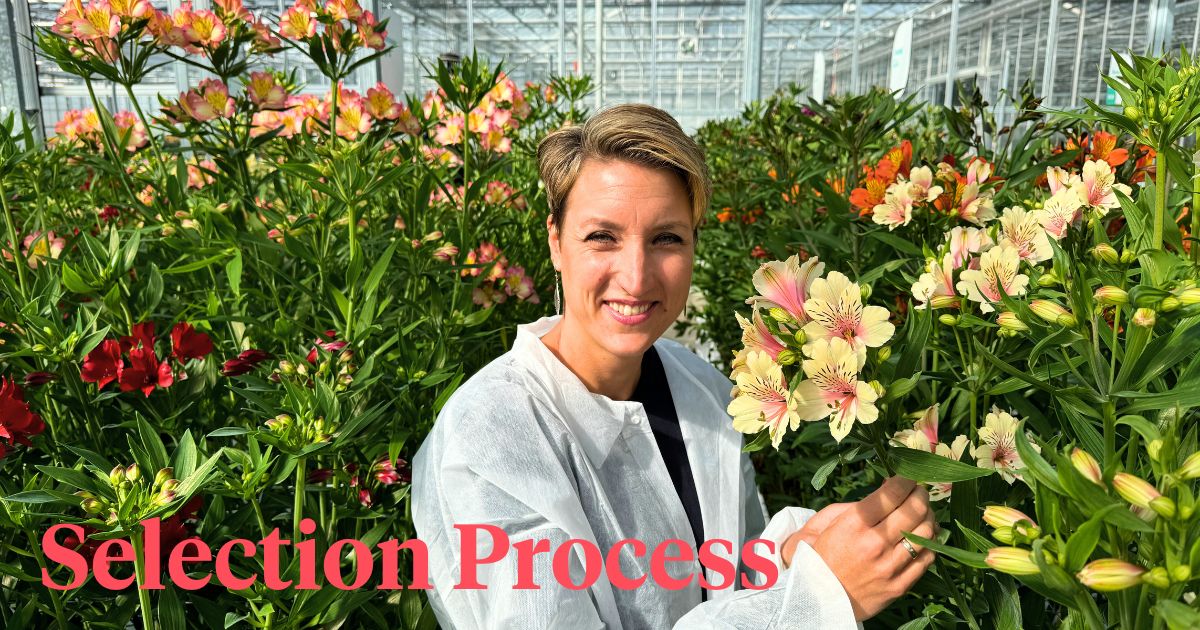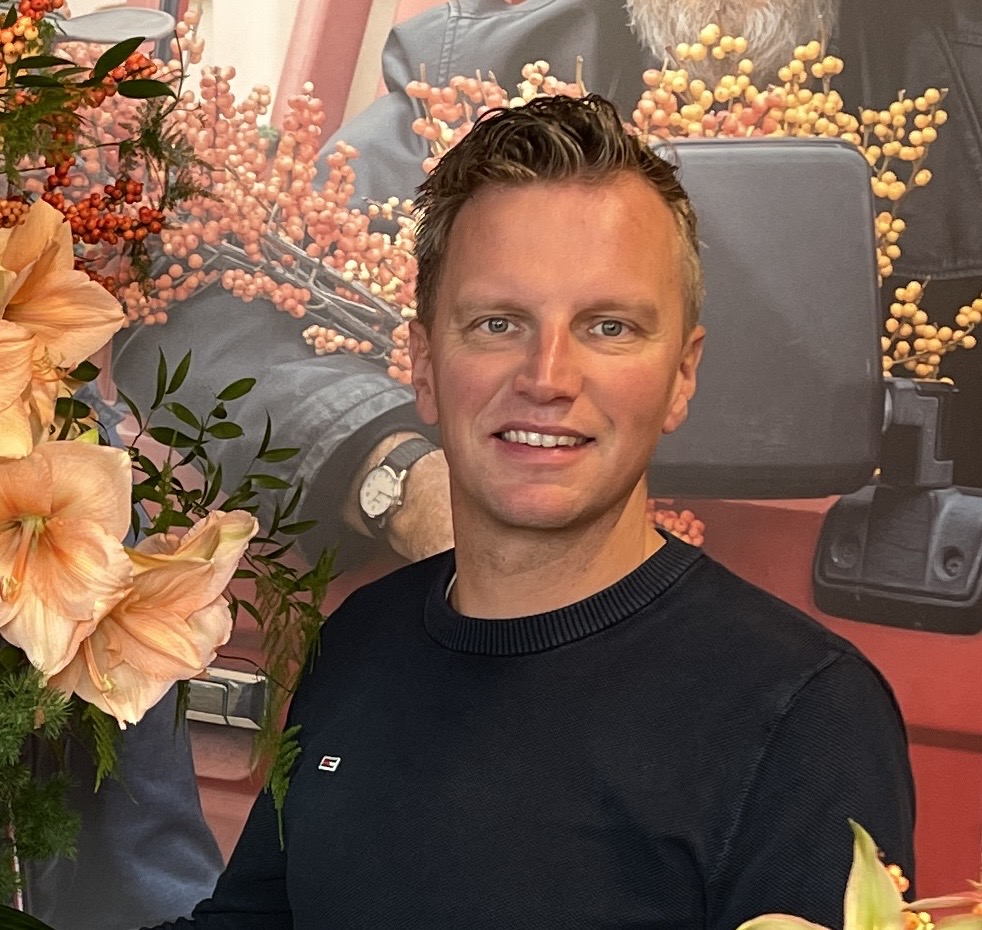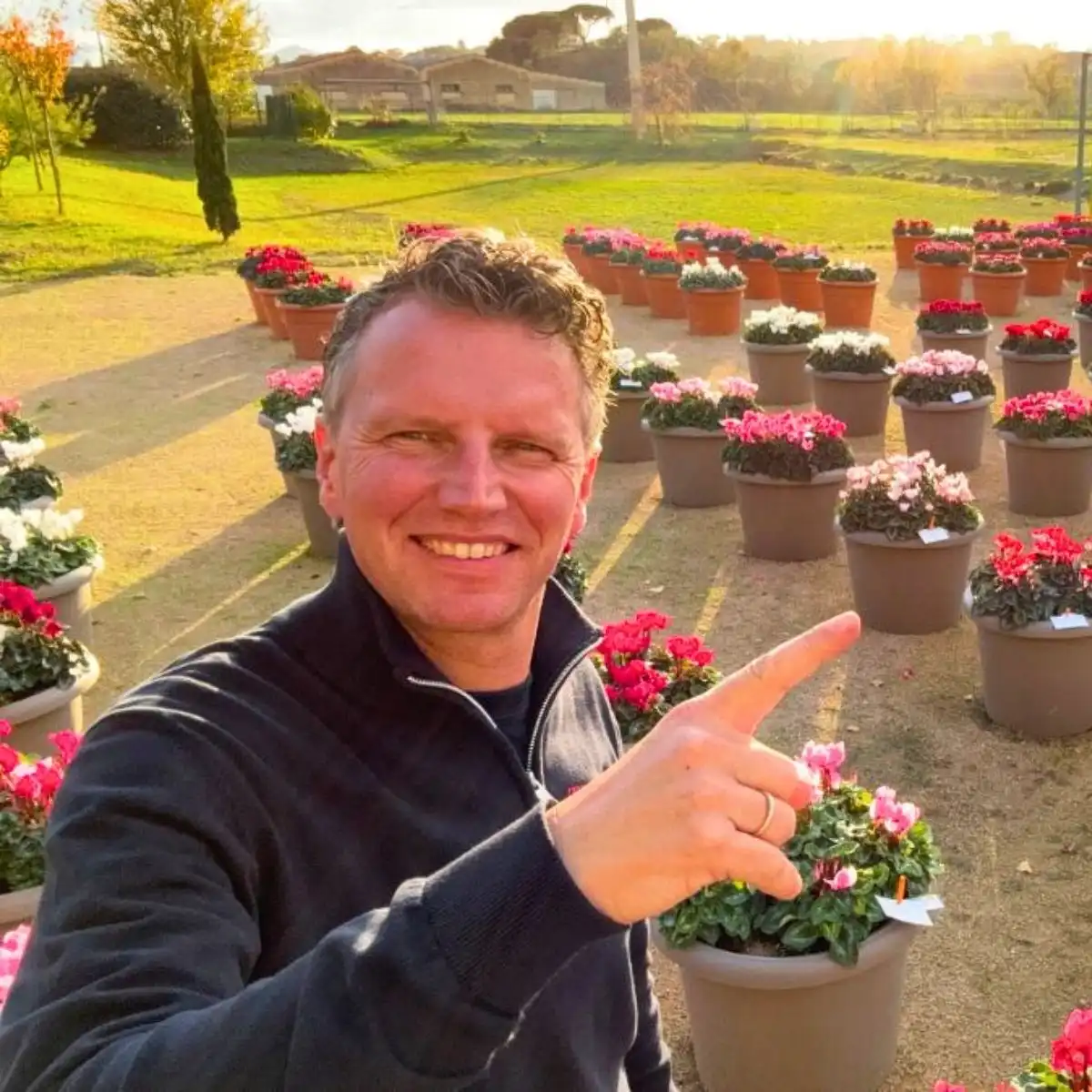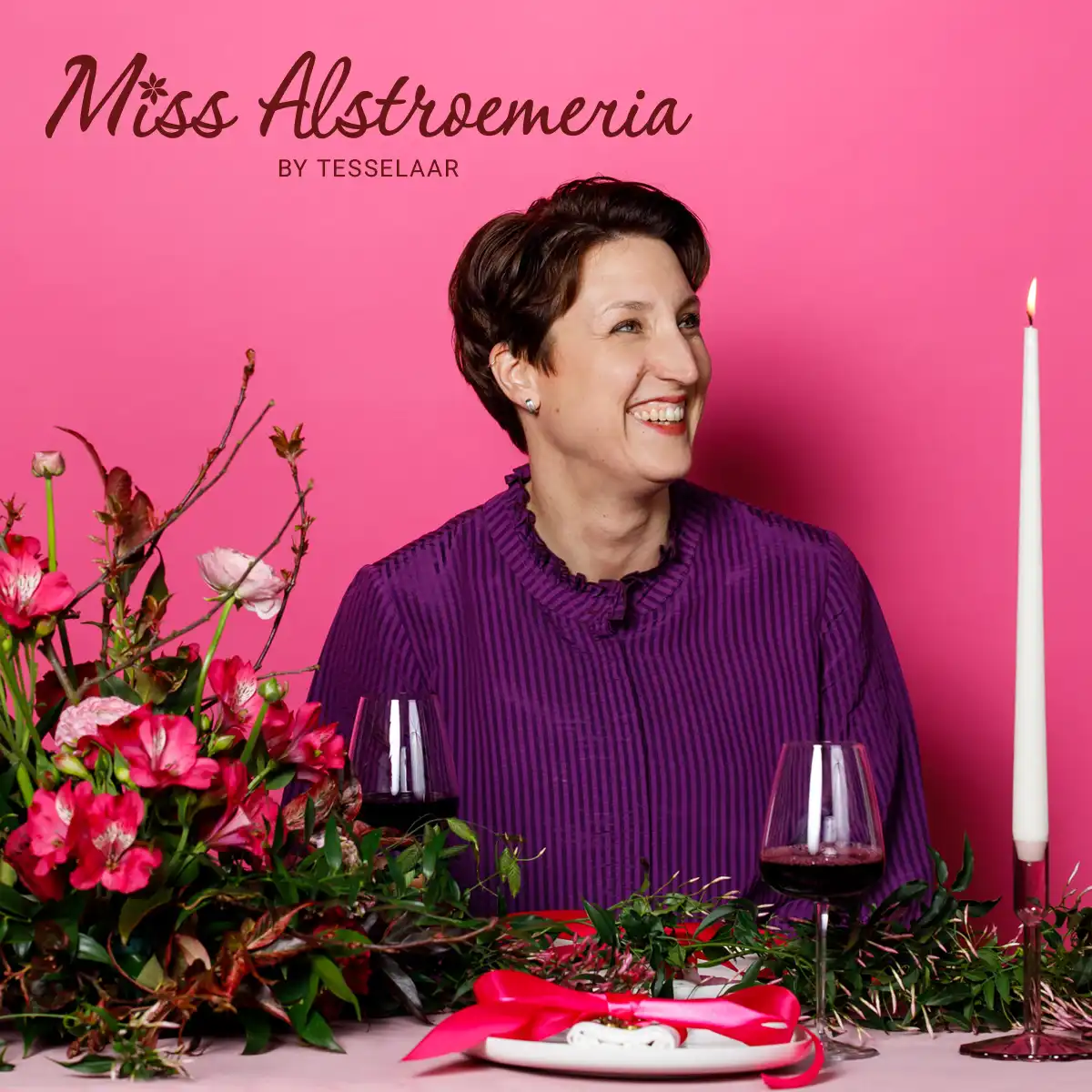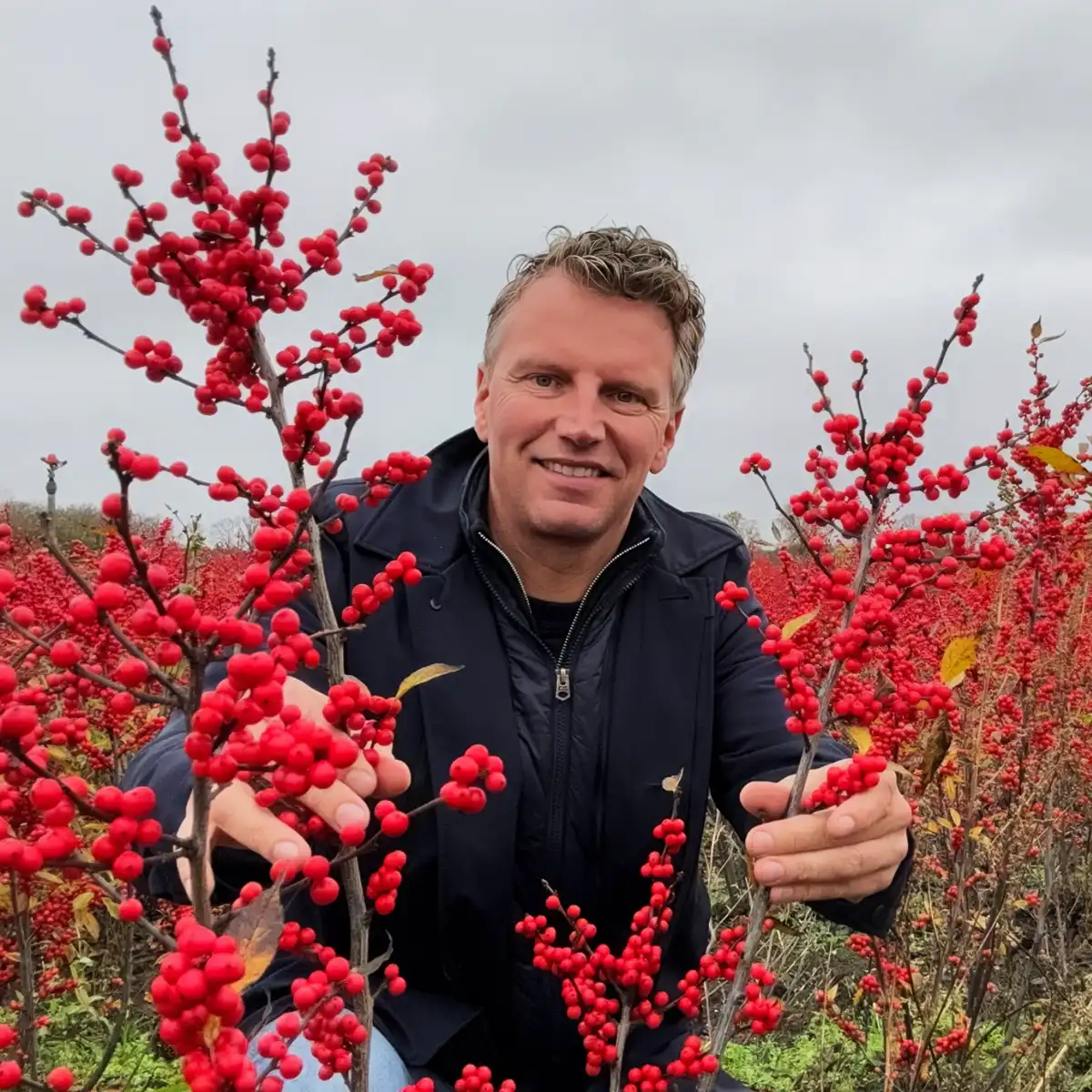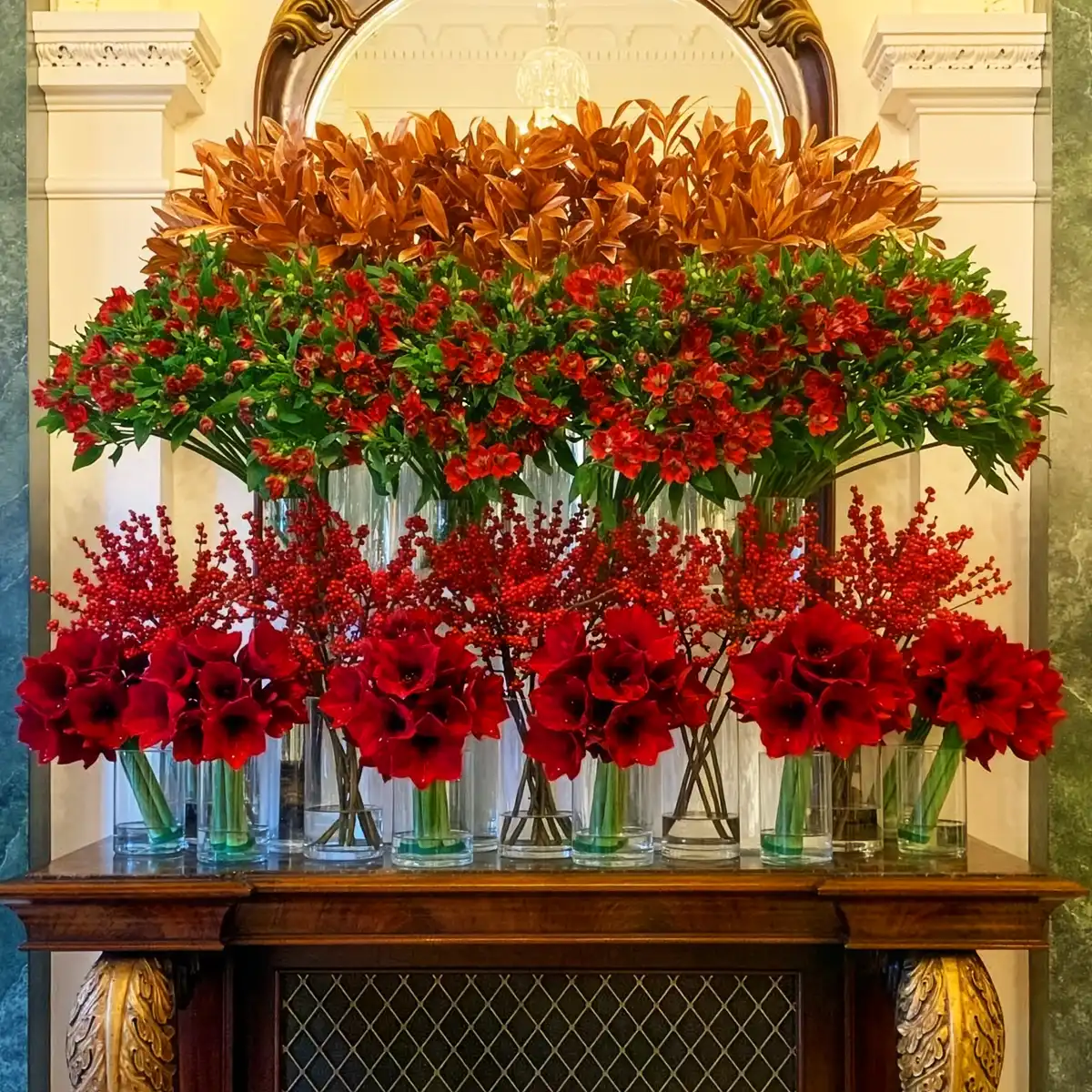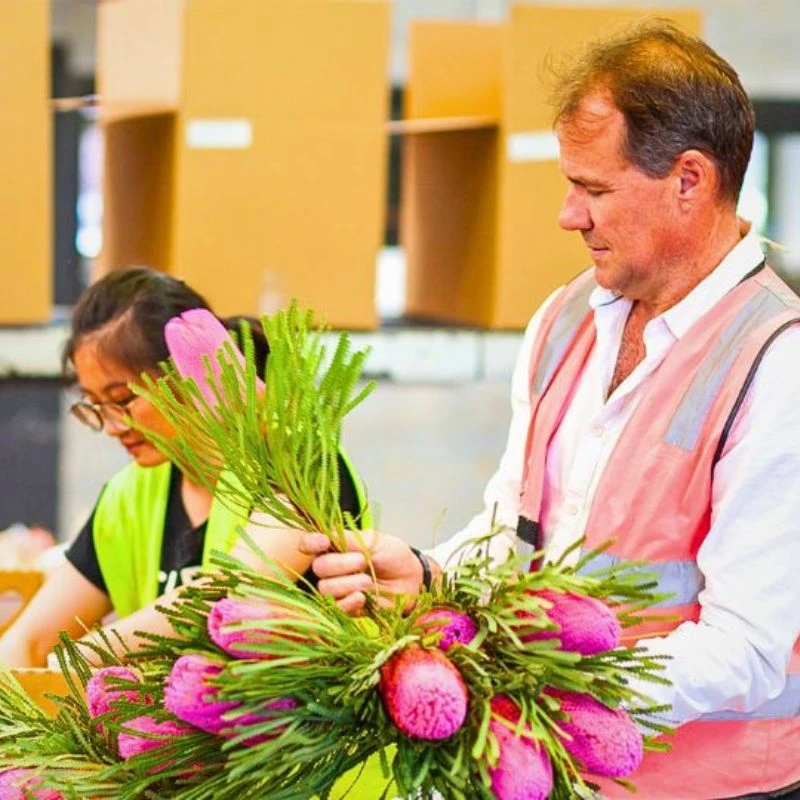During the FlowerTrials in June 2024, I visited breeder HilverdaFlorist together with Karolien Tesselaar from Tesselaar Alstroemeria. I was curious how she judges alstro novelties and what influences the decisions she and her husband Rick make when selecting a new variety to grow. And I found out that there’s more to it than meets the eye.
It's not only about a favorite color a customer prefers but also resistance to pests and diseases, production, and the shape of the flower among other details. Read along to find out Tesselaar's approach to alstro selection and growth.
The Growing of Alstroemerias
The alstroemeria is a perennial plant that produces new stems all year round. Because the plant is grown in a greenhouse, it receives nutrition, water, light, heat, and CO₂ all year round. In the 1970s, greenhouses were built to protect fruit and vegetables from the weather. It is better to keep heat 'inside' and thus also give opportunities to grow flowers from other parts of the world here in the Netherlands.

The rise of the floriculture sector was a fact. The development of techniques makes it possible to produce more and more flowers per square meter. In this way, we make extremely effective use of every square meter of greenhouse. Because the alstroemeria is a perennial, it is a very sustainable cut flower. After all, it takes less energy to plant the flower compared to bulbs and seed flowers. Does this mean that the alstroemeria will never be replaced? No, there is a whole strategy attached to this.

Karolien Tesselaar explains how the process works in their greenhouse:
"We change several varieties every year. Because we have 10 hectares, we have enough production areas left over to supply flowers during the transition period. Changing a crop will take you out of production for 3 months. The process itself is fairly straightforward:
- Removing the gauze;
- Short mowing of the crop;
- Removal of CO₂ hoses, heating pipes, and the rain pipe;
- Milling the soil;
- Steaming the soil so that all the roots are well dead;
- Digging the ground;
- Planting the new plants;
- Installation of CO₂ hoses, heating pipes and the rain pipe;
- When the plant starts to grow, the netting is applied layer by layer."
Replacing Alstroemeria Crop
I took the initiative to learn how often Tesselaar Alstroemeria replaces its crop. Karolien Tesselaar had the following to say:
"In the case of alstroemeria, a new plant produces very thick stems with many flowers for the first two to three years. The plant keeps producing new rhizomes and so the path grows closer and closer in those two years. The amount of stems per square meter increases and therefore the weight of the stem decreases somewhat after these two years. As a grower, you want to produce new crops every year for that reason, in the market it is still the case that weight sells. The heavier the stem, the higher the price you get for the flowers."

"We have now chosen to replace a crop after five years. This was for seven years, from a sustainability point of view (after all, it takes quite energy to replace a crop) we used this term. By shortening this time, we get more flowers in the high segment.
This is also the reason why we have started dividing our flowers into brands: Alstro Lux for the heavy crops (for the attentive reader: the flowers that are max. two years old), Alstro Elegance for the strong stems with many flowers but slightly lower weight, and Alstro Nature: simply beautiful, but lighter and sometimes a bit more curved in the stem."

"So what do you pay attention to when it comes to new crops? Certain colors should always be available in sufficient quantities, such as red, pink, and white. In addition, we look for varieties that are virus-resistant and we look at maintenance in the crop. There are varieties that, for example, often produce stems without flowers. Then you have to go through the crop more often with a maintenance team to 'thin it'."
Selecting New Alstro Species
Interestingly, I learned a lot during my visit to the breeder HilverdaFlorist with Karolien. During the visit, she mentioned that:
"Throughout the year, we regularly visit the three breeders to see how new varieties are developing. We choose varieties that have been on the market for some time so that we know for sure what the production and quality of the flower is like. New varieties have not been in a greenhouse for more than two years, how they perform over time is not certain. Therefore, it is quite a risk to plant such a species."

"A species cannot be resistant to viruses, get leaf stripes, disappointing weight and production, etc. Selecting the right varieties is not an easy task. Simply asking the customer what color he would like is not an option. Especially because a plant is then in our greenhouse for a longer period.
With our current range, we have a robust foundation. For the future, we are still looking for yellow and lilac, which we don't have in the greenhouse at the moment."

Expect exciting and new alstro species coming months from the four Tesselaar Alstro brands: Alstro Special, Alstro Lux, Alstro Elegance, and Alstro Nature. From the new selections, Tesselaar Alstroemeria not only commits to producing quality and sustainable flowers but ensures they do so consistently. It was a great learning experience for me, to be part of the selection process and what goes into it!

